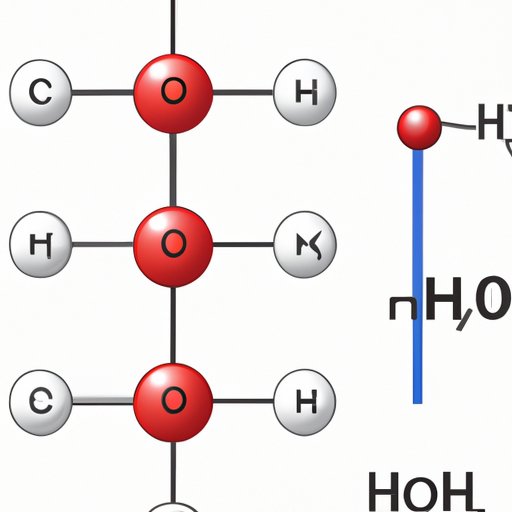Introduction
If you are working in the field of chemistry, you may have come across the term “molecular weight”. But what exactly is molecular weight and why is it important?
Molecular weight is the mass of a molecule, where the mass is calculated by adding up the masses of all atoms in the molecule. It is an essential concept in chemistry, especially in determining the physical and chemical properties of substances, reactions, and processes.
The purpose of this article is to provide you with a step-by-step guide on how to calculate molecular weight and to give examples that can help you understand the process better.
Step-by-Step Guide
Molecular weight is a pretty simple concept. The molecular weight of a compound is the sum of the atomic weights of all the atoms in its chemical formula. This is otherwise known as the molecular mass or the molar mass.
Here are the general steps to calculate the molecular weight of a compound:
- Determine the chemical formula of the compound
- Identify the different types of atoms in the compound
- Find the atomic mass of each type of atom in the compound
- Multiply the atomic mass of each atom by the number of atoms of that element in the compound
- Add the masses obtained in Step 4 to get the molecular weight of the compound
Examples & Calculations
Let’s take a few examples of common chemical compounds and calculate their molecular weight to help you understand the process better.
- Water (H2O)
- 2 x Atomic mass of Hydrogen = 2 x 1.008 = 2.016
- 1 x Atomic mass of Oxygen = 1 x 15.999 = 15.999
- Total molecular weight = 2.016 + 15.999 = 18.015
- Methane (CH4)
- 1 x Atomic mass of Carbon = 1 x 12.011 = 12.011
- 4 x Atomic mass of Hydrogen = 4 x 1.008 = 4.032
- Total molecular weight = 12.011 + 4.032 = 16.043
- Glucose (C6H12O6)
- 6 x Atomic mass of Carbon = 6 x 12.011 = 72.066
- 12 x Atomic mass of Hydrogen = 12 x 1.008 = 12.096
- 6 x Atomic mass of Oxygen = 6 x 15.999 = 95.994
- Total molecular weight = 72.066 + 12.096 + 95.994 = 180.156
Infographic

- Determine the chemical formula of the compound
- Identify the different types of atoms in the compound
- Find the atomic mass of each type of atom in the compound
- Multiply the atomic mass of each atom by the number of atoms of that element in the compound
- Add the masses obtained in Step 4 to get the molecular weight of the compound
Video Tutorial
Here’s a video tutorial that can help you understand how to calculate molecular weight more easily:
Comparison
Since molecular weight is the sum of all the atomic weights of all the atoms in a compound, it is a useful way to compare the masses of different compounds. By comparing the molecular weight of two compounds, you can determine which one is heavier or lighter.
For example, let us compare the molecular weight of glucose and sucrose.
- Glucose (C6H12O6)
- Total molecular weight = 180.156
- Sucrose (C12H22O11)
- Total molecular weight = 342.296
As you can see, the molecular weight of sucrose is higher compared to glucose, which indicates that sucrose is heavier than glucose. This information can be helpful in chemical analyses, like in identifying and separating different compounds.
Conclusion
Congratulations! You have learned how to calculate molecular weight using the simple formula that defines the molecular mass of a compound. The process involves identifying the chemical formula, finding the atomic weight, and adding up the atomic mass of each atom present in the compound.
Through the examples and calculations, you now have a better understanding of how to calculate molecular weight, as well as how to compare the weight of different chemical compounds. Remember, molecular weight is essential in understanding the physical and chemical properties of substances, and it is useful in various research, analysis, and experiments within the field of chemistry.
